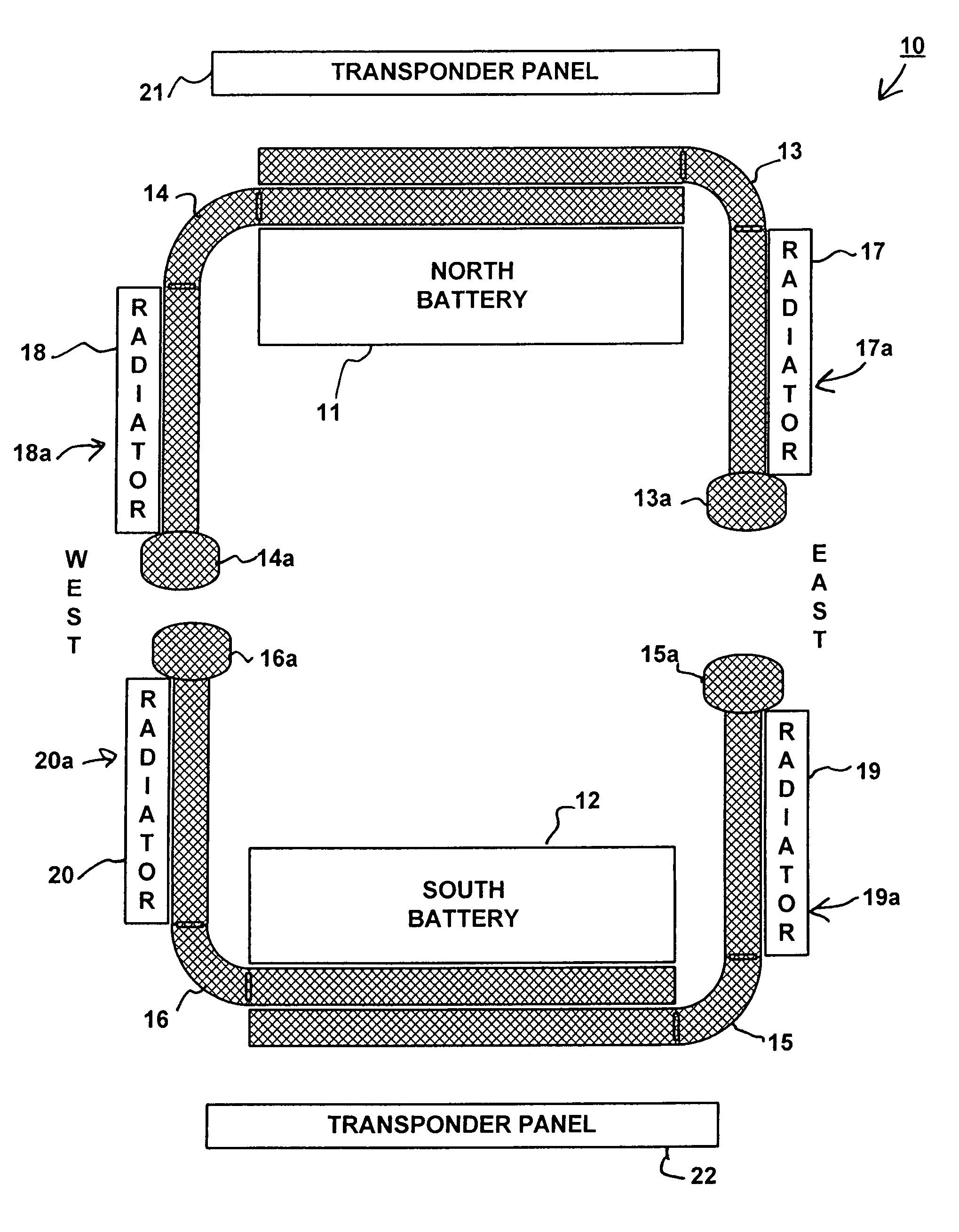Spacecraft battery thermal management system
a battery and thermal management technology, applied in the field of spacecraft power systems, can solve the problems of reducing the area available to other payloads and bus equipment on the north and south facing sides, limiting the overall payload capabilities of spacecraft, etc., and achieve the effect of discharging excess heat from the battery
- Summary
- Abstract
- Description
- Claims
- Application Information
AI Technical Summary
Benefits of technology
Problems solved by technology
Method used
Image
Examples
Embodiment Construction
[0014]The detailed description of the invention set forth below in connection with the associated drawings is intended as a description of various embodiments of the invention and is not intended to represent the only embodiments in which the invention may be practiced. The detailed description includes specific details for the purpose of providing a thorough understanding of the invention. However, it will be apparent to those skilled in the art that the invention may be practiced without all of the specific details contained herein. In some instances, well known structures and components are shown in block diagram form in order to avoid obscuring the concepts of the invention.
[0015]FIG. 2 is a block diagram depicting the arrangement of a spacecraft battery thermal management system according to one embodiment of the invention. Spacecraft battery thermal management system 10 depicted in FIG. 2 includes North battery 11, South battery 12, heat pipes 13-16, reservoirs 13a-16a and rad...
PUM
 Login to View More
Login to View More Abstract
Description
Claims
Application Information
 Login to View More
Login to View More - R&D
- Intellectual Property
- Life Sciences
- Materials
- Tech Scout
- Unparalleled Data Quality
- Higher Quality Content
- 60% Fewer Hallucinations
Browse by: Latest US Patents, China's latest patents, Technical Efficacy Thesaurus, Application Domain, Technology Topic, Popular Technical Reports.
© 2025 PatSnap. All rights reserved.Legal|Privacy policy|Modern Slavery Act Transparency Statement|Sitemap|About US| Contact US: help@patsnap.com



